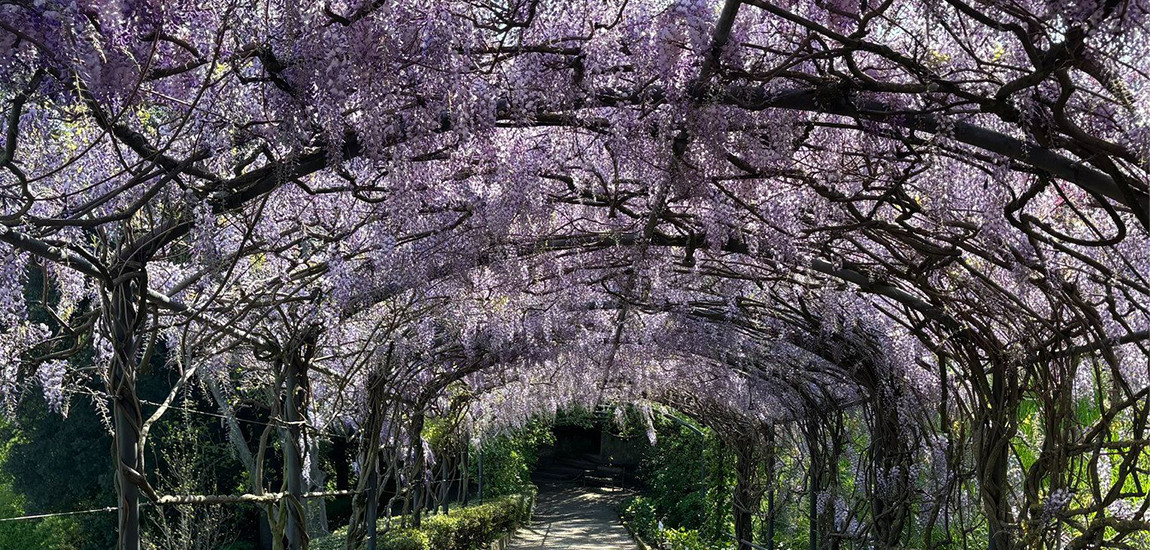
Villa Bardini: art and wisteria
Villa Bardini is
undoubtedly one of the most spectacular exhibition spaces in Florence, as well
as a beautiful green lung of the city.
It
was originally Villa Manadora, built for Francesco Manadori in 1641 on a
pre-existing medieval building.
The property is located on the slope of the hill that descends towards the Lungarni
Torrigiani and Serristori, this makes it possible to enjoy a spectacular view
of the city, which is the reason why it was also called Villa Belvedere.
The
villa was passed on to several owners throughout the years, and the land,
initially used for agricultural crops, was finally transformed into a wonderful
Italian garden.
In
the twentieth century the owner was collector Stefano Bardini who made it the museum villa that we know today.
Upon
Stefano's death, the property passed to his son Ugo, who left the villa and its
park to the city of Florence.
After
a long period of restoration carried out by the Bardini and Peyron Monumental
Parks Foundation together with the CR Firenze Foundation, it was reopened to
the public in 2006.
Today
the property includes a space for temporary exhibitions, the Bardini Museum and three gardens: the
Italian garden with its baroque staircase, the English wood and the
agricultural park where the famous wisteria
pergola is located.
The
villa has sixty rooms, and in addition to the exhibition venues, it also hosts
conference spaces and restoration services, the offices of the Bardini and
Peyron Monumental Parks Foundation and the Tuscan Horticulture Society.
The
strong point of Villa Bardini is certainly the park, which can be visited with
the same ticket as the Boboli Gardens and which in spring lights up purple with
the flowering of the wisteria that covers the long pergola leading to the
Loggia del Belvedere, a destination for photographers and tourists looking for
the perfect shot to post on social media.
The
the number one attraction of the villa in spring is in fact the wisteria, a
flower with an ancient history that seems to have been brought to Italy from
China by Marco Polo.
To
be able to admire this spectacular flowering it is necessary to visit the park
between April and May.



